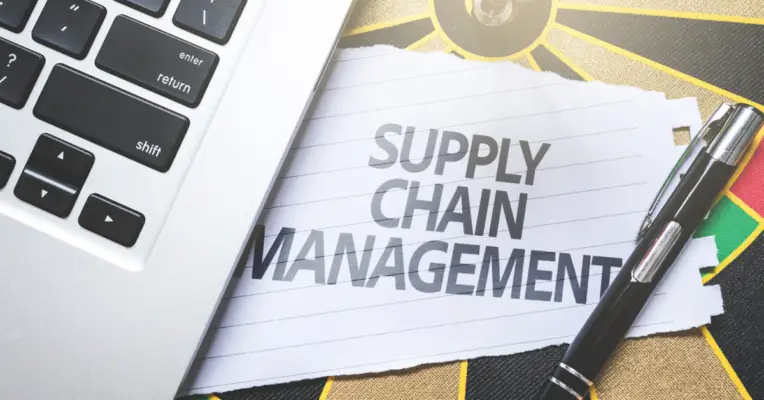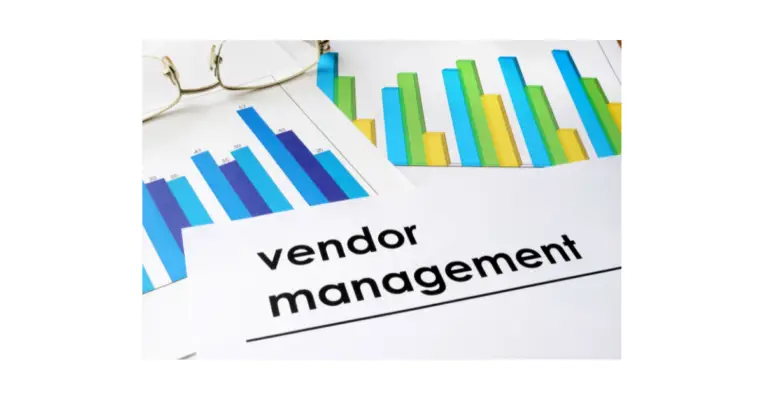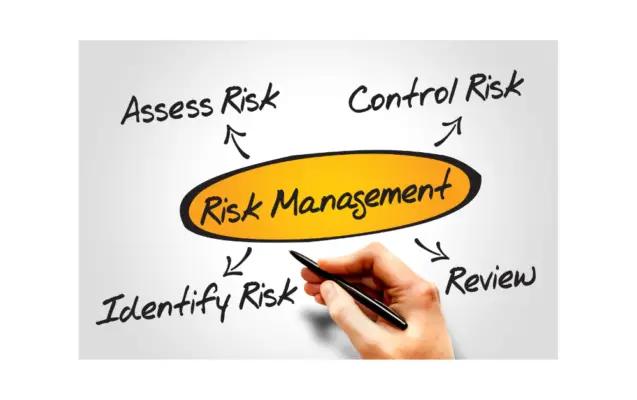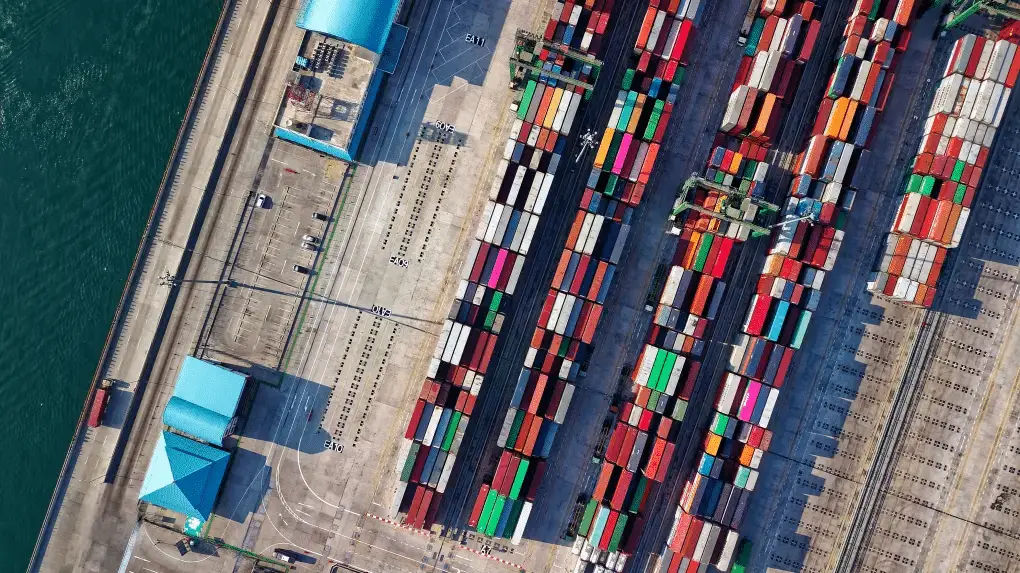The goal of supply chain risk management (SCRM) is to identify, assess, and mitigate the risks that can disrupt the supply chain. There are always potential risks inherent in any SCRM system and supply chain disruption. The following are some of the most common risks associated with SCRM:
* Data breaches: A SCRM system necessarily contains sensitive data about suppliers, including contact information, financial information, and performance data. If this data falls into the wrong hands, it could be used to blackmail or extort suppliers.
* System failures: A SCRM system is only as good as its weakest link. If any part of the system fails, the entire system could collapse. This could lead to disruptions in the supply chain and potentially put lives at risk.
* Dependence on technology: A SCRM system is heavily dependent on technology, which means it is vulnerable to power outages, hackers, and other technological problems.
* Implementation challenges: Implementing an SCRM system can be a complex and costly undertaking. If not done properly, it could lead to disruptions in the supply chain and negative publicity for the company.
SCR is a management process that helps organizations identify, assess, and manage supply chain risks. Implementing global supply chain risk management strategies can improve business operations and improve customer service. SCR improves supply chain resilience.
Supply Chain Management defines the process for transforming raw materials consumed into finished goods that an organization offers. These functions can also be planned and managed for procurement, conversion, and logistic management.
Supply chain risk management is a vital process for businesses that want to maintain a smooth flow of products and services. However, even with the best risk management plans in place, occasional unforeseen events can still occur. If these unexpected setbacks happen, it’s important for companies to have a response strategy in place so they can minimize the damage and get back up and running as quickly as possible.
In this blog post, we’ll take a closer look at some of the risks that can impact supply chain visibility and discuss some of the steps businesses can take to protect themselves from them. We’ll also explore how supply chain disruptions can affect companies financially and discuss some methods for mitigating those effects. Read on to learn more!

What is Supplier Risk Management?
Supplier risk management is the process of identifying, assessing and mitigating risks associated with supplier relationships. There are a number of different risks that can impact supplier relationships, including financial risks, regulatory risks, reputational risks and operational risks. Below are some of the key elements of supplier risk management:
– Identification of risks: To effectively manage supplier risk, organizations must first identify the risks that could potentially impact their supplier relationships. This can be done through a variety of methods, such as supplier audits, questionnaires and interviews.
– Assessment of risks: Once the risks have been identified, they must be assessed in terms of their likelihood and potential impact. This will help organizations prioritize which risks need to be addressed first.
– Mitigation of risks: Once the risks have been identified and assessed, organizations can then take steps to mitigate them. This can involve a variety of measures, such as developing contingency plans, establishing alternate suppliers and strengthening communication channels with suppliers.
Supplier risk management is a discipline used primarily by manufacturers, retailers and financial institutions. Among them are auditors, vets and rating suppliers on their strategic value to the business and subsequent risk factors.
A comprehensive Supplier Risk Matrix is produced based on a risk analysis which shows how risk could be associated with supplier operations. Supplier Risk Management refers in more detail to supplier management. In many ways, the risk management process is a very small subset of what true SRM is about in practice.

Supply Chain Risk Examples
Supplier risks include many types of problems related to vendor relationships. Vendors are crucial since most provide external data sources for organizations.These problems can cause disruption to production operations and projects. They could cause reputational problems. Risk assessment of supply chain can Here is an example where supply risks arise:
Shortages
These may result from a lack of required material in the production of finished products. The shortage might occur due to a short-term lack of availability or a long-term lapse in product availability in the supply chain.
Price increases
The rises in cost might be due to demand for commodities, currency volatility and customs taxes. Volatilities in prices may negatively impact financial predictions as well as profits in businesses in general.
Quality failures
Quality failure occurs when certain components are delivered without meeting the specification for shipment or completing the expected performance.
Supply shocks
Sudden worldwide or industrywide decrease in supplies due to natural disasters, terrorism, or trade embargoes.
Supplier relations
If a dispute arises between you and your partner the dispute can result in replacement by the supplier.
Internal supply chain risks
It describes the supplier risk factors within your control and is easily identified and monitored by software that assesses supply chain risk, strong analysis tools, advanced IoT capabilities and other technologies.
Although internal supply chain hazards are more manageable than external threats they are nonetheless unavoidable. Here is the best way for you to find out what supply chain risks exist to prevent potential disruptions from happening. Familiarizing yourself with possible risks and issues arising helps improve supply chain risk management.
External supply chain risks
This risk comes out of your organisation, as its name suggests. It’s unfortunately hard to anticipate and often takes more effort to deal with them. Both internal and external risks to the entire supply chain need to be mitigated.
Benefits of Supply Chain Risk Management Software
This is where supply chain risk management software comes in. This type of software helps you to identify risks, track progress, and make changes to your supply chain in real-time. In other words, it helps you to keep your business running smoothly and efficiently, even in the face of adversity. Here are some of the benefits of supply chain risk management software:
* It helps you to identify risks early on and take steps to mitigate them increasing competitive advantage.
* It gives you visibility into every part of your supply chain so that you can make changes as needed and mitigate risk.
* It allows you to track progress, and risk event and see results in real-time.
* It makes it easier to adapt to changing conditions and keep your business running smoothly through risk mitigation.
Supply chain risk management software offers your business numerous opportunities beyond the intended purpose. Supply chain management software is able to help reduce shipping time and allows you to track everything from beginning to end.
The analyzed data can help you achieve the long-term goals of customer support, product quantity and customer satisfaction. Most supply chain systems offer scalable solutions that support multiple functions. It would make sense to centralise your operations throughout your supply chain from demand to delivery.

Importance of Supply Chain Risk Management
Supply chain Risk management (SCRM) involves developing a strategy for evaluating, monitoring and managing risks within a supply chain. A good program is a tool to ensure a successful supply chain.
Supply chain risk management includes an effective knowledge of supplier management, conducting internal and external inspections, a thorough understanding and a comprehensive supply chain strategy and a comprehensive crisis-resolution plan.
Systematically monitor risks
Choosing an automated supply chain management solution can simplify ensuring that the management of risks is consistently monitored and streamlined by reducing the time spent managing the supply chain. It gives your company valuable insight into the process of streamlined supply chain operations.
Centralize data
Too many software solutions can hinder risk control, especially when business data is kept within multiple disparate systems. To simplify data analysis, predictive insights and data sharing, investments should be made by using unified solutions which store data from all sources at once.

How AI fits into Supply Chain and Supplier Risk Management?
Artificial Intelligence has an enduring impact in the industry and its new uses and development are continually emerging.
AI is still not mainstream in procurement or supply chains and early adoption may have enormous benefits for you as an early adopter. AI can provide predictive and prescriptive analytics of the SCRM system.
Supplier Scorecards and Performance
Using Supplier Scorecards can help you manage a supplier more efficiently. This is done by ranking them by several factors including sustainable performance, strategic importance to business diversity and supplier diversity.
It gives you the ability to rank a supplier and group them to find a strategic core set”. This process is extremely tedious and changes often. Every day new information arrives. New legislation is passed, new providers are introduced, performance problems are encountered or your business strategy is changing. This introduces potential risk factors to the organization.
Compete and Win With an Intelligent Supply Chain
Build operational agility in a streamlined process through analytics automation. Supply chains contain gas which runs the motors in the manufacturing and retail sectors. Without this product, you’d lose your inventory or make no profit at all.
Unfortunately, there’s always been an interruption to our supply chain, and it forces both retailers and manufacturers into a rush to get everything back on track.
A Gartner survey found that 26% of the respondents surveyed said their networks were extremely resilient, and nearly half a per cent said their networks would become highly resilient in some time. What is advisable to avoid these supply chain risks?
Crisis management
The key to effective procurement crisis management is to understand disruption in procurement. A second disaster can be a huge problem for many people and organizations.
Developing your own plan and leading from the top
Strong leadership during crisis situations is vital.In 2017 researchers wrote that procurement managers will need to have a quick knowledge base to make informed decisions making in the future.
In 2020, a pandemic will witness this in action when companies making smart decision-making could more effectively deal with changing markets. In addition, the procurement team must prepare and develop a plan for immediate and extended-range acquisition to help ensure the effectiveness of their operations in order to meet the necessary business objectives of the company.
Short term
A quick emergency response can only begin by setting up expectations. Here, procurement leaders must establish authority and work together to form an agreed framework. By introducing specific regulations, your business can not only reduce waste or omissions of contracts, and mitigate environmental risks.
What the rules actually are will differ from organization to organization depending on the specific situation. Our team met a smaller group that responded to COVID19 by changing the approval rules so any new purchase request had to get approval directly from the CFO. The CFO knows the financial health of the company.
Adapting to your industry
The problem with crises is that they don’t have the same answer. They would help prevent confusion in disaster situations. Instead, it’s a good idea to consider specific verticals or verticals within a company.
In this case medical and pharmaceutical companies responded entirely differently from the manufacturing and transportation sectors. Ensure that the crisis plans are a good way to evaluate each possibility and that the option remains open for the individual crisis.
Long term
Generally, long-term objectives relating to crisis management are in place once things stabilize and there are clear pathways towards recovery. Now you need to plan the following possible disruptions.
The best way to remove data silos is to increase transparency within a corporate environment. Only by analyzing the most recent, accurate data can you make quick decision-making. In addition, the management should promote transparency and create processes for sharing and integrity.
Medium term
One important medium-term strategy to develop in your response plans should be to adopt agile strategies. This includes both adapted decisions and tools for a crisis to arise as they unfold.
At mid-terms, you likely know what damages have happened, what steps you can take to mitigate those damages and what your situation can last. When planning to start planning for the future, it is essential to adopt an agile mindset.
Steps to Manage Supply Chain Risks
However, the management of the supply & supplier risk can be a complex matter.
Identify the problem
In assessing supply chains it is important that we identify risk components. In this case, you must account for every tier 1, however, it is better to go beyond tier 2 or 3 where disruption is prevalent most. A risk-aware culture will ensure robust risk assessment.
It is important to have your own risk scorecards that capture every aspect of an overall risk using the normal numerical scale you consider important. When you decide how you want to measure the risks of terrorism you can develop solutions that track the supply chain on an ongoing basis. This is an essential active surveillance strategy for mitigating risk.
Assessed
Now the risk data has been released but it can’t even get actionable. In this phase, we have to look closely at the results to determine the potential impacts. You should focus your risk management strategies on what is most significant and what will be the biggest impact.
It is important that you know your business. This is no exhaustive list and it is best to involve more parties to understand your risks and what they need from you. In addition, there is a risk analysis matrix.
Mitigating
Identifying and assessing risks is important and if you haven’t mitigated the risks, you sit on the sidelines and are unable to deal with disruptions. The most effective risk management plan is split into two parts; the initial must take place alongside a risk identification if necessary.
As soon as you get acquainted with the data, you can start taking measures that can help you prevent an interruption from happening. This may include the elimination of sole source activities or expanding supplier portfolios by geography and encouraging/fine-tuning the process to mitigate reputational risk.
Conclusion
Supply chain risk management is a critical process for businesses in today’s digital age. Through understanding the risks and implementing preventative measures, companies can safeguard their data and operations. While there are risks associated with any preventive measure, supply chain risk management is a vital step in protecting your business from potential disasters. Have you implemented a supply chain risk management plan? What challenges have you faced? Let us know in the comments below.
Chris Ekai is a Risk Management expert with over 10 years of experience in the field. He has a Master’s degree in Risk Management from University of Portsmouth and is a CPA and Finance professional. He currently works as a Content Manager at Risk Publishing, writing about Enterprise Risk Management, Business Continuity Management and Project Management.

